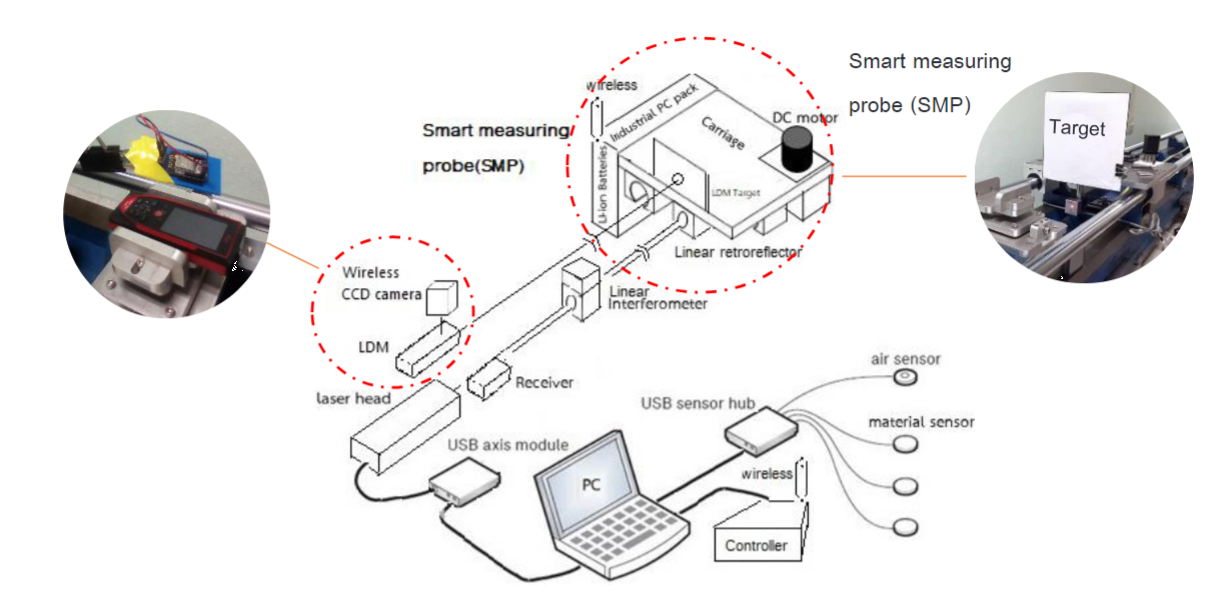An advanced technique of laser distance meter calibration
DOI:
https://doi.org/10.60136/bas.v10.2021.149Keywords:
Laser distance meter, Smart measuring probe, Calibration, Measurement uncertaintyAbstract
Recently, the laser distance meter mostly employed in construction area, and other related to measurement applications. Whereas, the length calibration laboratory certainly needs to find out both technical calibration and their traceability. This research presents the advanced technique of smart measuring probe for performance test method of laser distance meter, based on ISO 16331-1 (2012). The minimized measurement uncertainties are 0.64 mm, 0.73 mm, and 0.80 mm of 3 samples, at maximum range of reference distance 20 m, the confident level at approximately 95%.
References
Time of flight [online]. [viewed 17 February 2021]. Available from: https://en.wikipedia.org/wiki/Time_of_flight
WISNIEWSKI, M. and Z. RAMOTOWSKI. EURAMET Supplementary Comparison, EURAMET.L-S20 (#1169). Comparison of laser distance measuring Instruments. Final Report [online]. [viewed 20 February 2021]. Available from: https://www.bipm.org/utils/common/pdf/final_reports/L/S20/EURAMET.L-S20.pdf
CHINCHUSAK, W. and V. TIPSUWANPORN. Investigation of yaw errors in measuring tape calibration system. Measurement. 2018, 125, 142-150.
INTERNATIONAL ORGANIZATION FOR STANDARD IZATION. ISO 16331-1:2012. Optics and optical instruments — Laboratory procedures for testing surveying and construction instruments - Part 1: Performance of handheld laser distance meters. 2012.
AGILENT TECHNOLOHIES, INC. 2010, Laser Measurement System 5529A - User's Guide. Hewlett-Packard Company, 5301 Stevens Creek Boulevard, Santa Clara, California 95052-8059. May 10, 2010.
Program XAMPP version3.2.2, work instruction for Laser Meter Certification Project - LMCP, First Edition, 2020-10-13.
UNITED KINGDOM ACCREDITATION SERVICE. M3003. The expression of uncertainty and confidence in measurement. EDITION 3, NOVEMBER 2012

Downloads
Published
How to Cite
Issue
Section
License
Copyright (c) 2021 Bulletin of Applied Sciences

This work is licensed under a Creative Commons Attribution-NonCommercial-NoDerivatives 4.0 International License.









